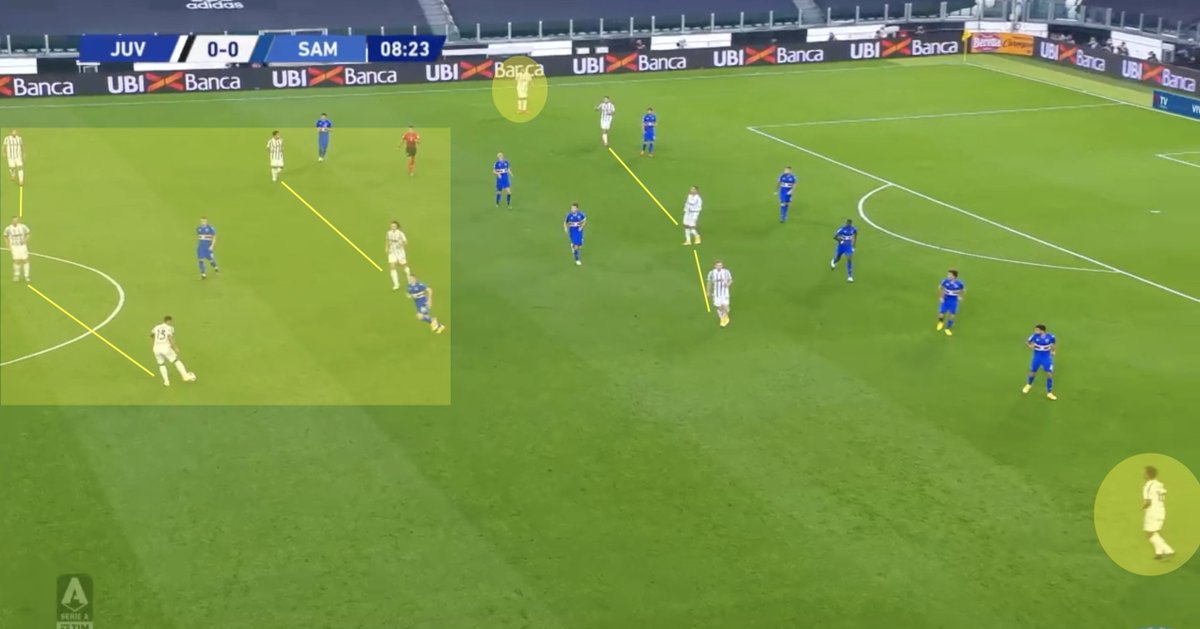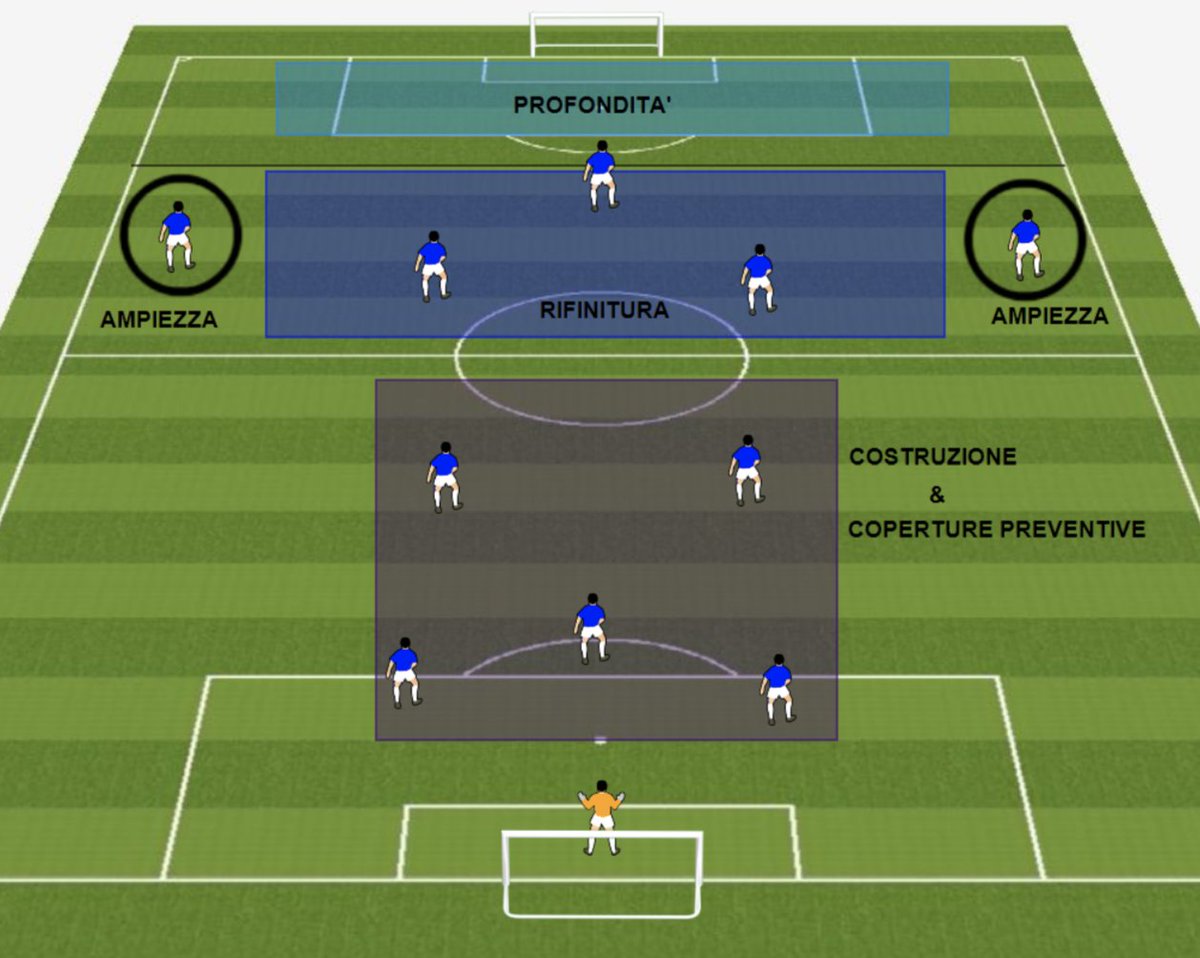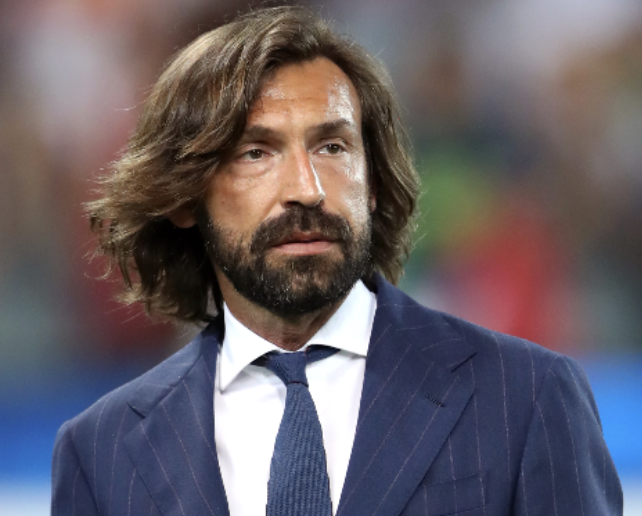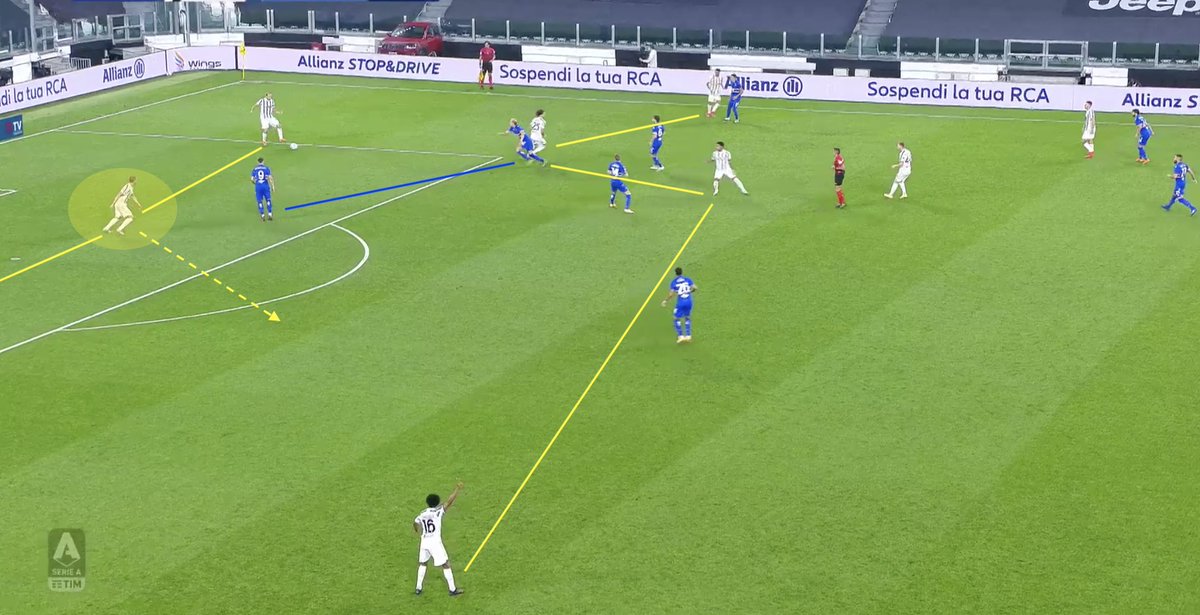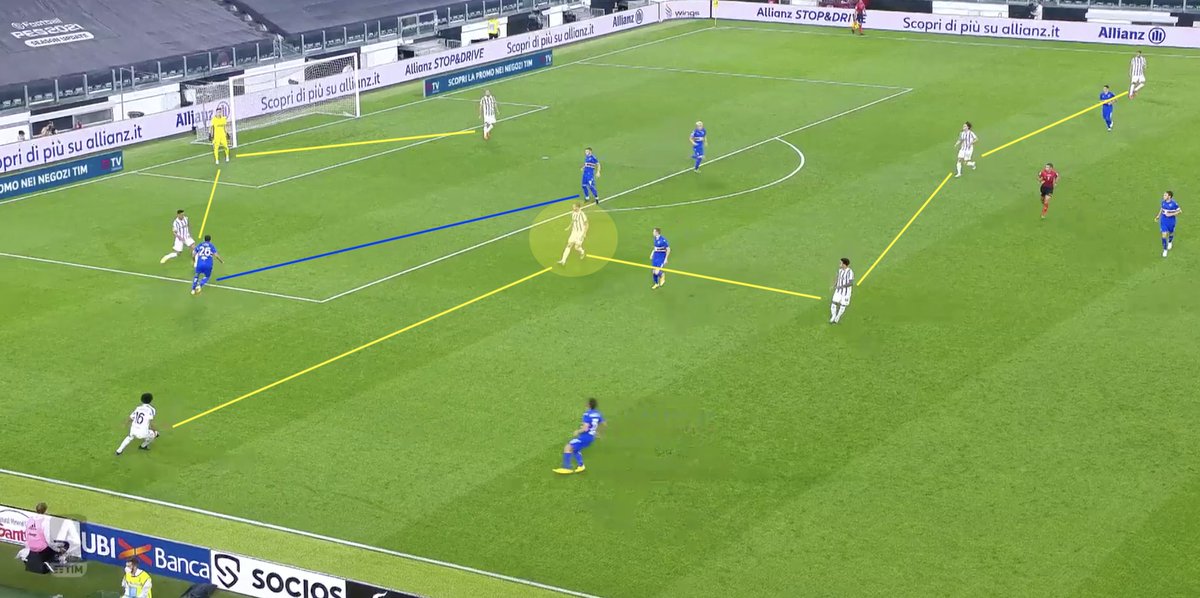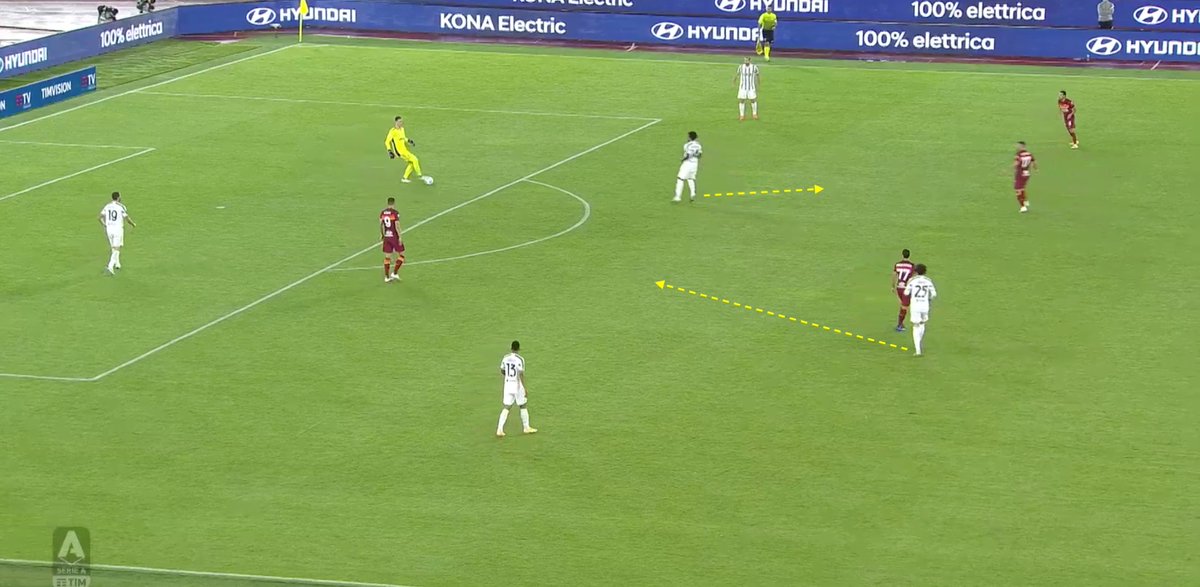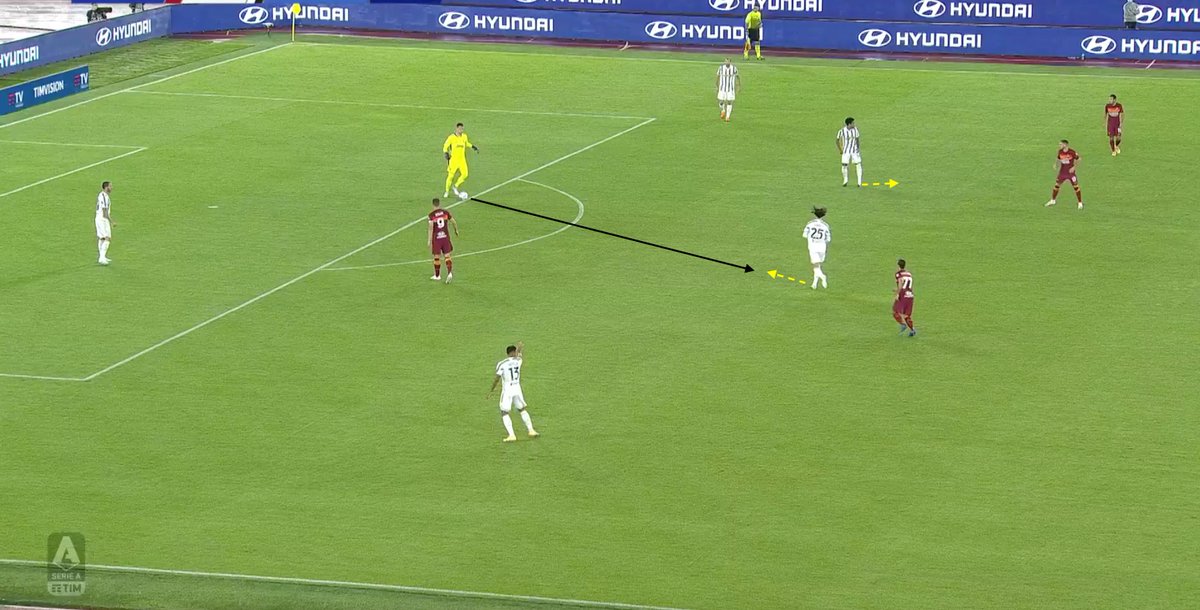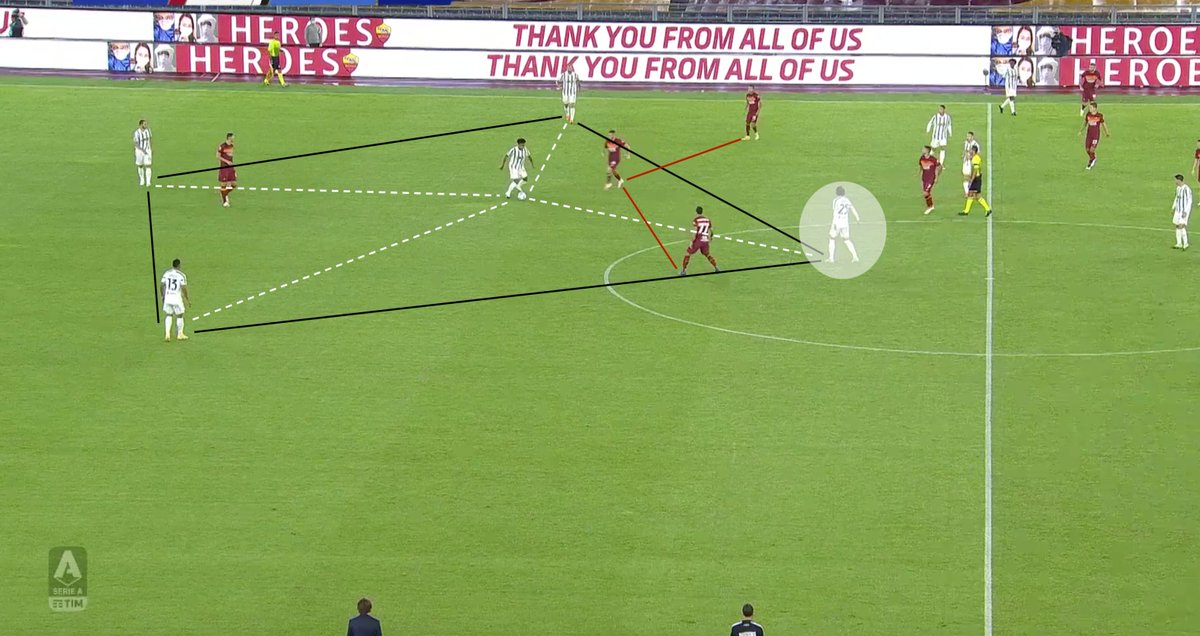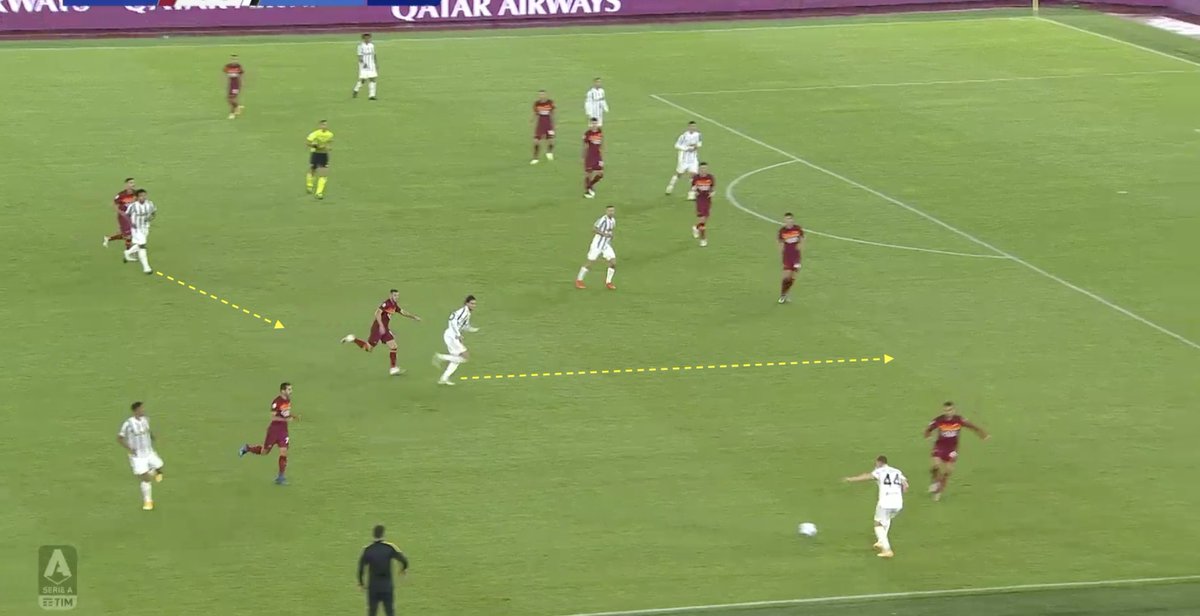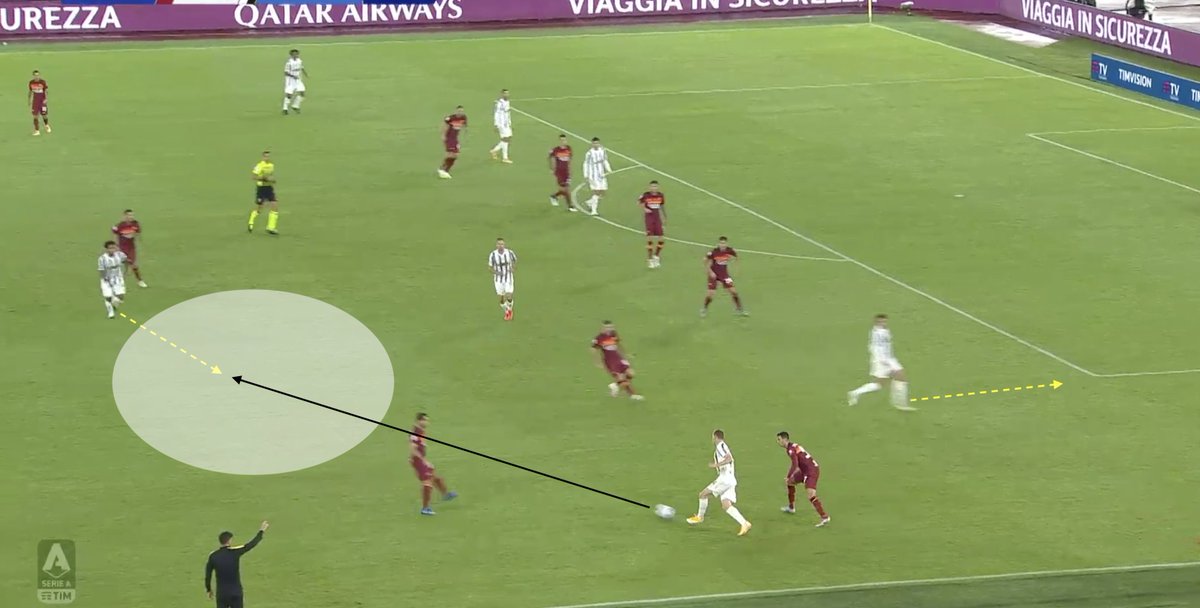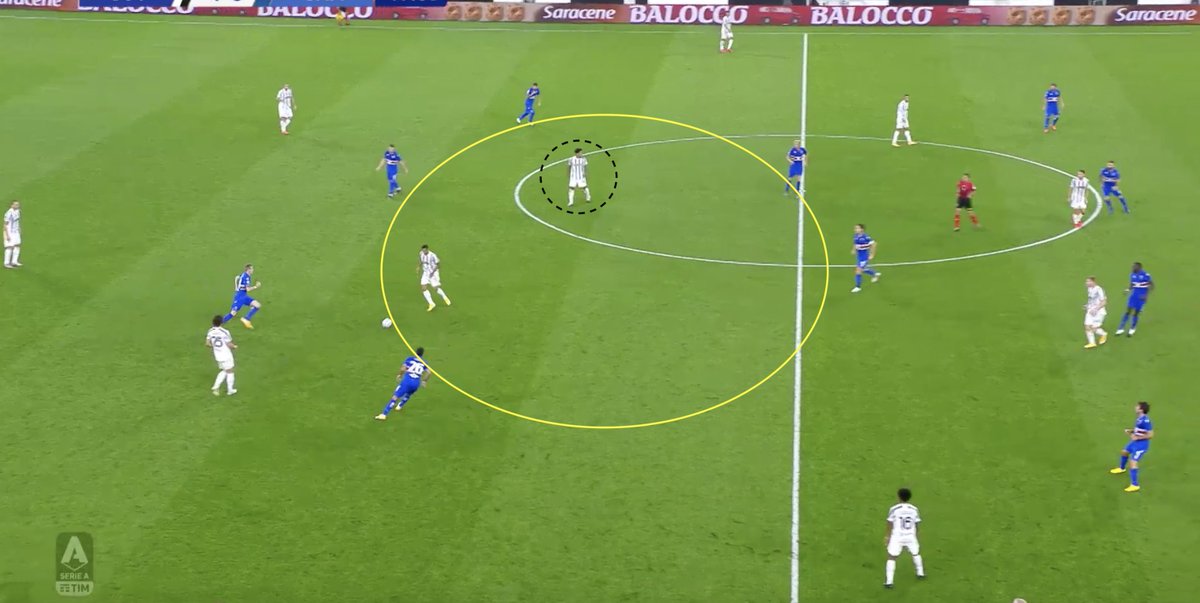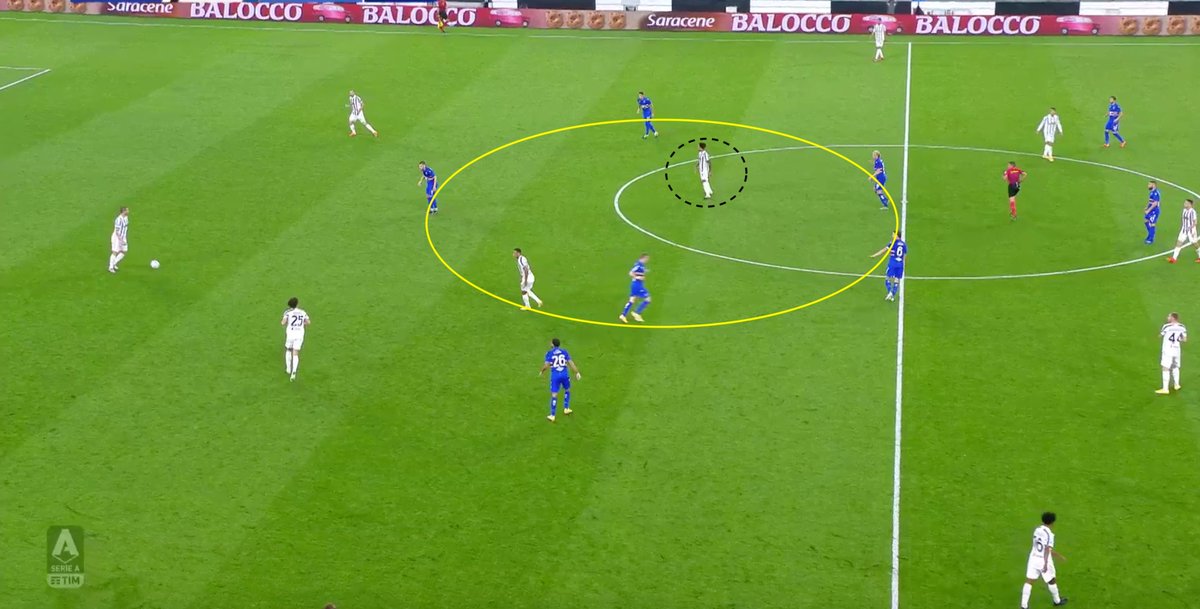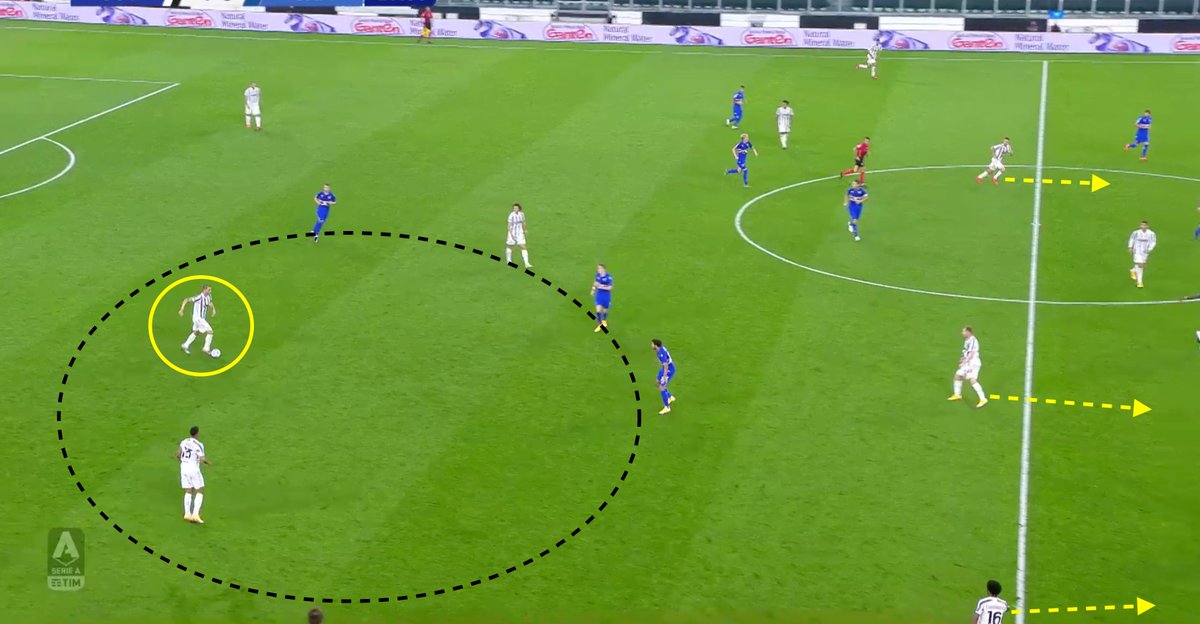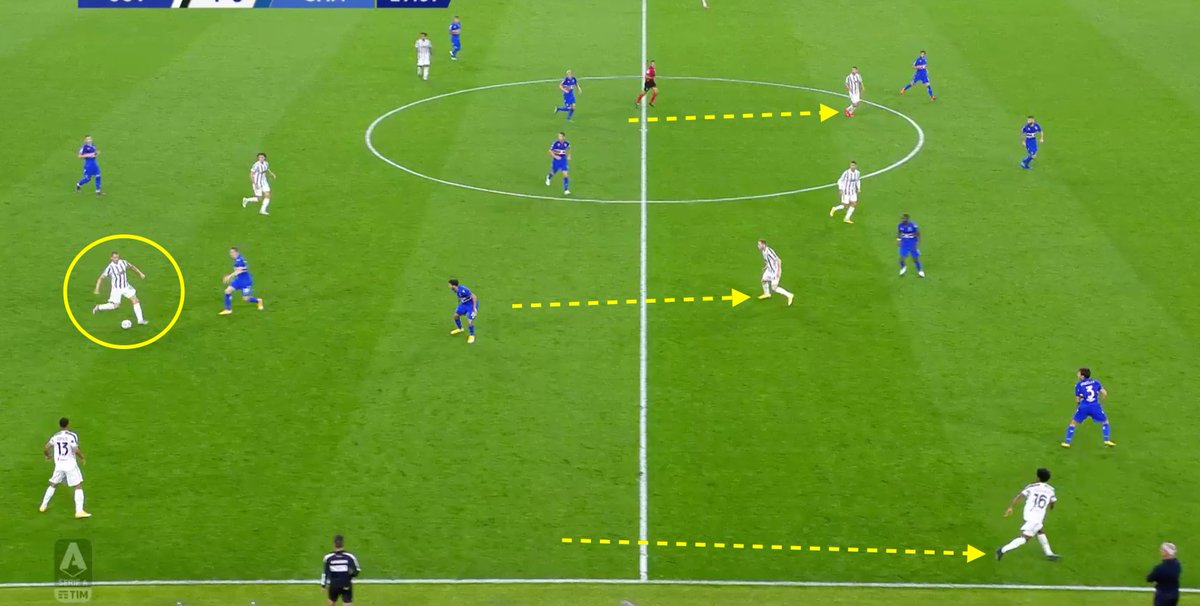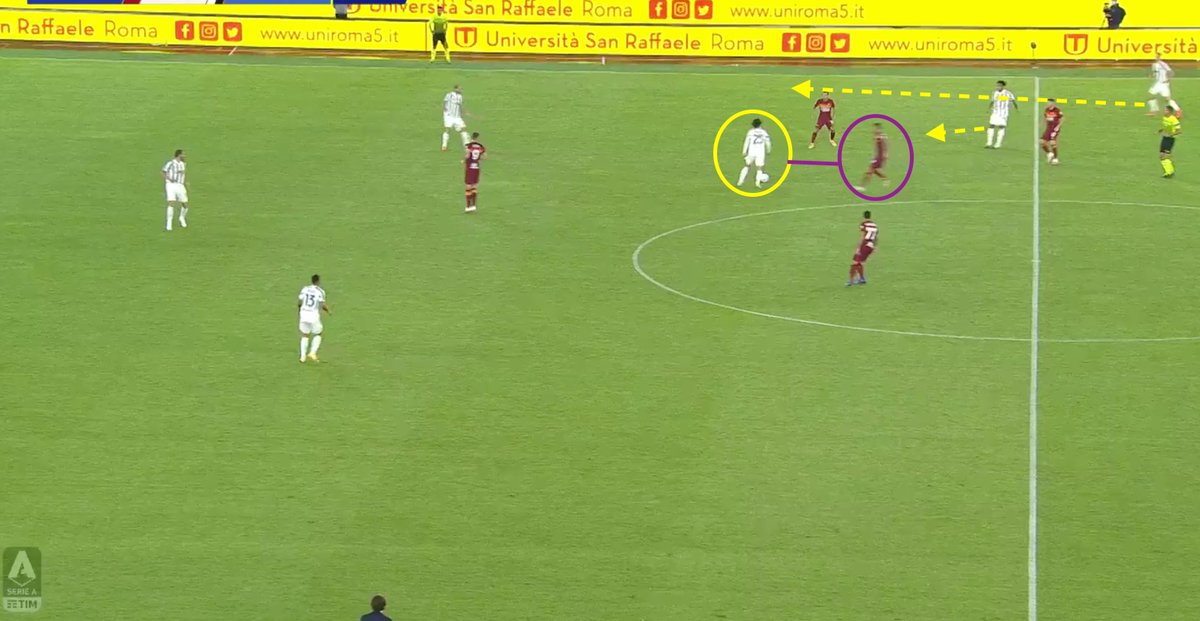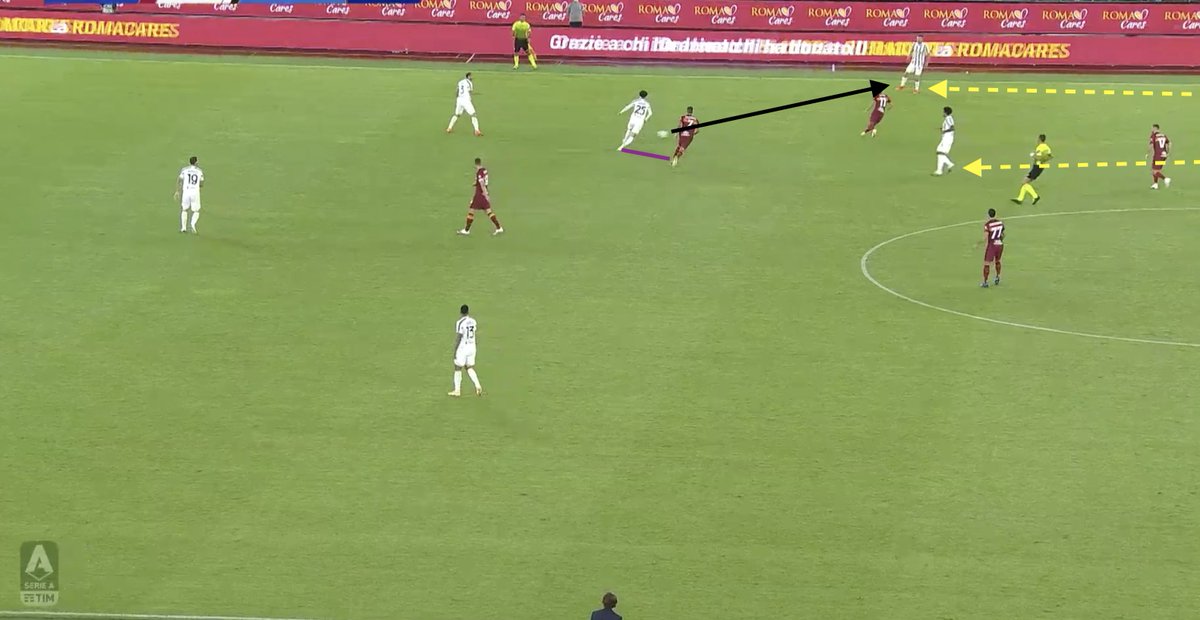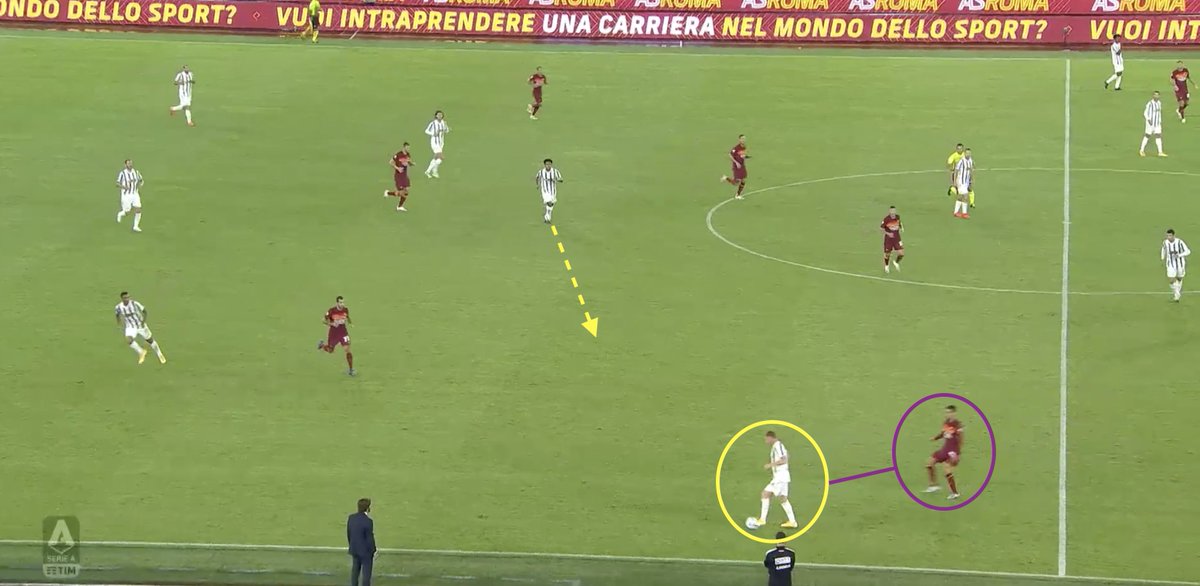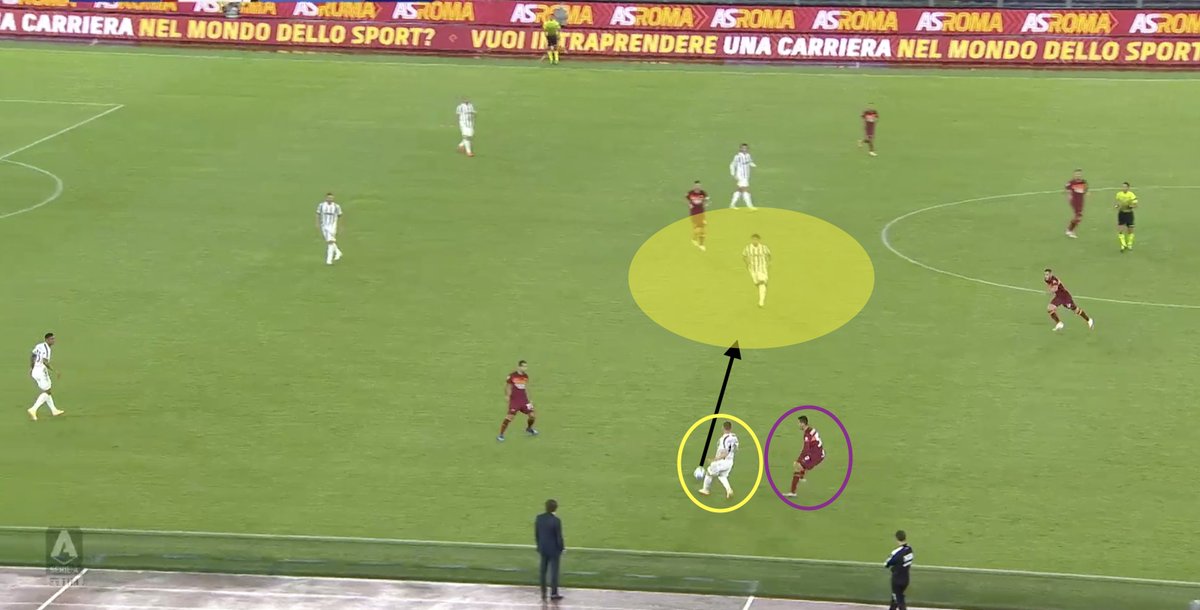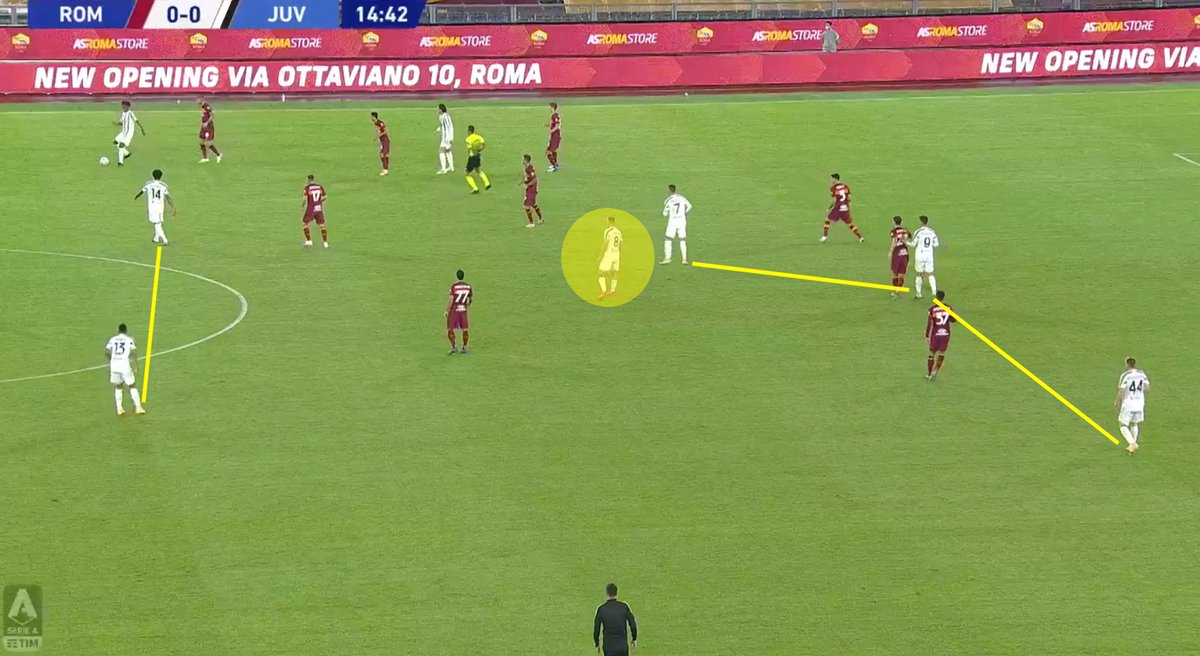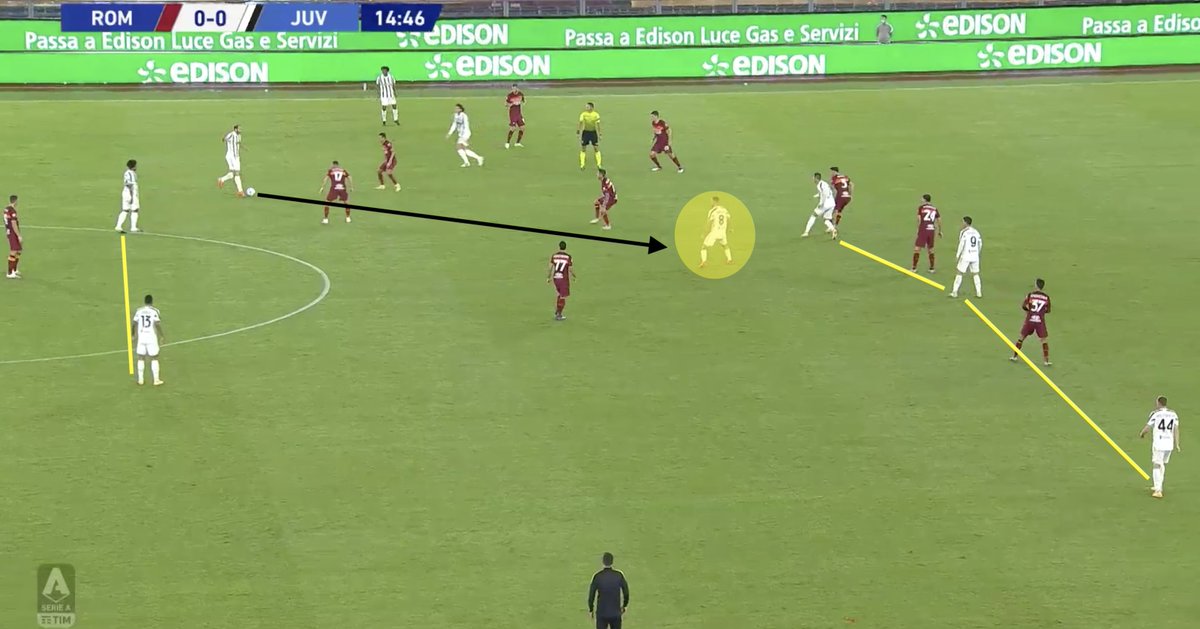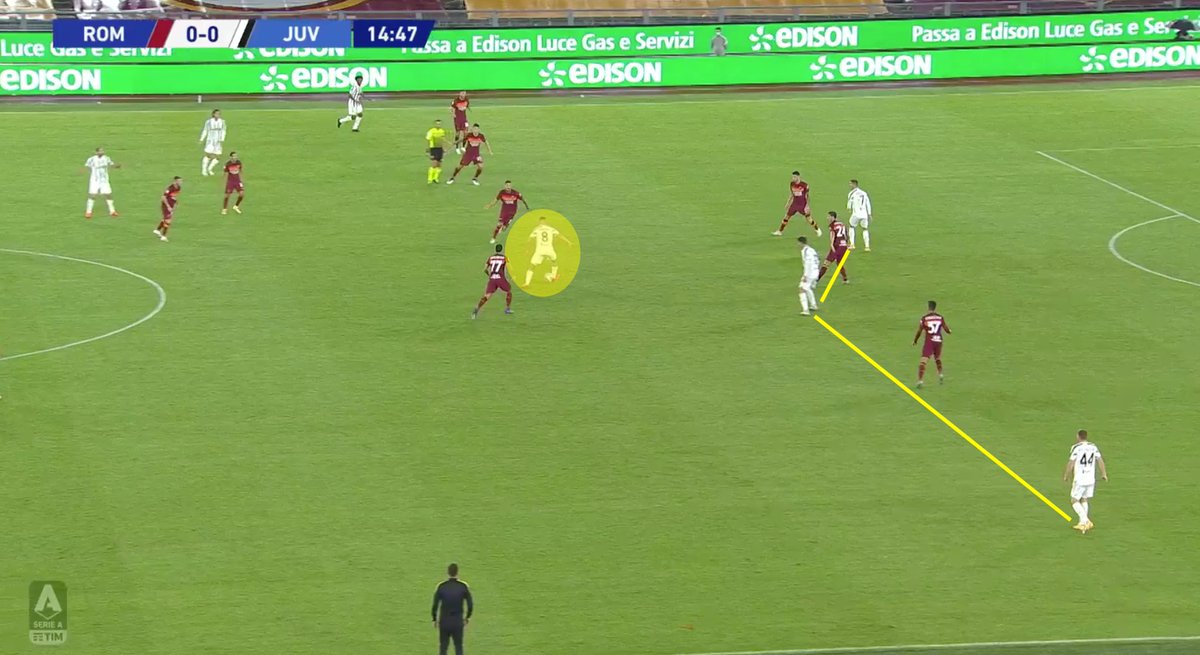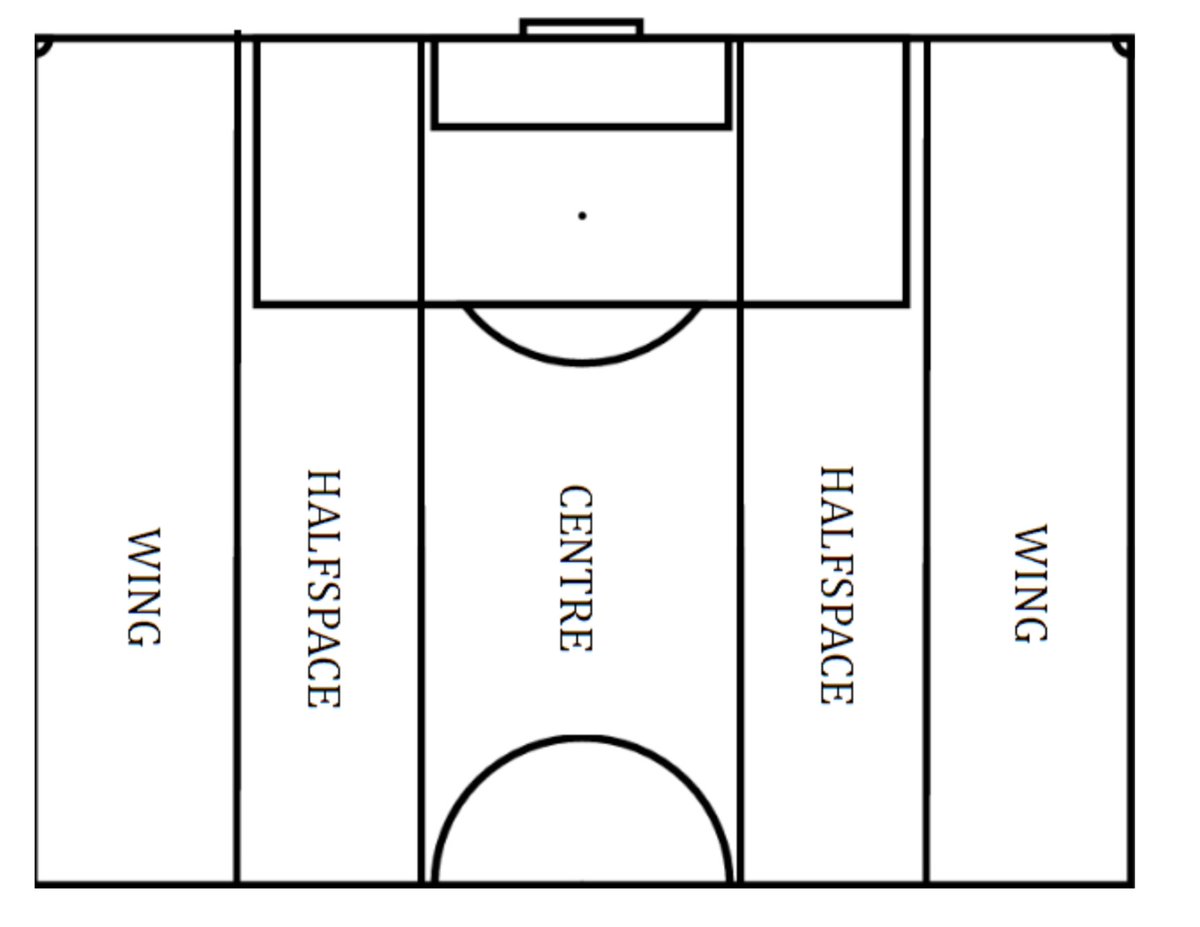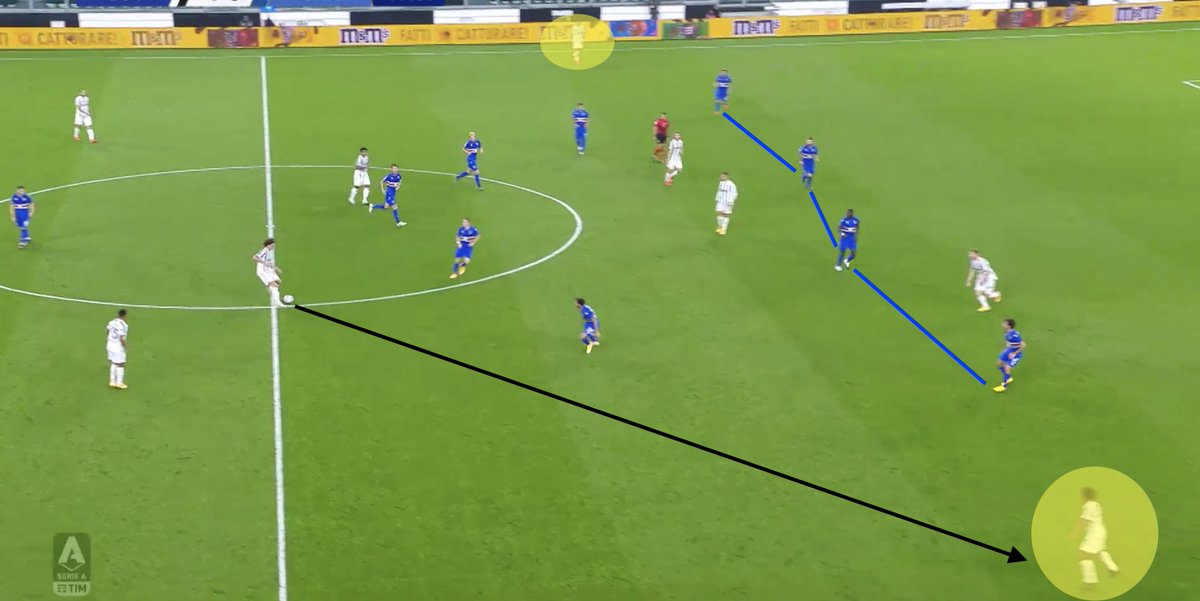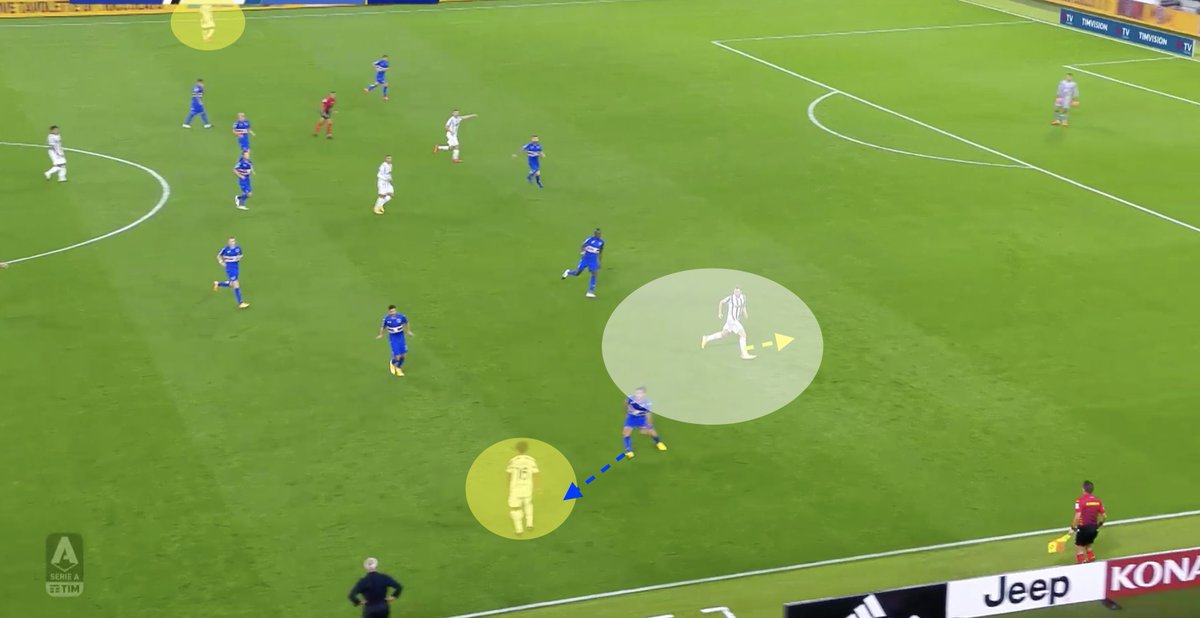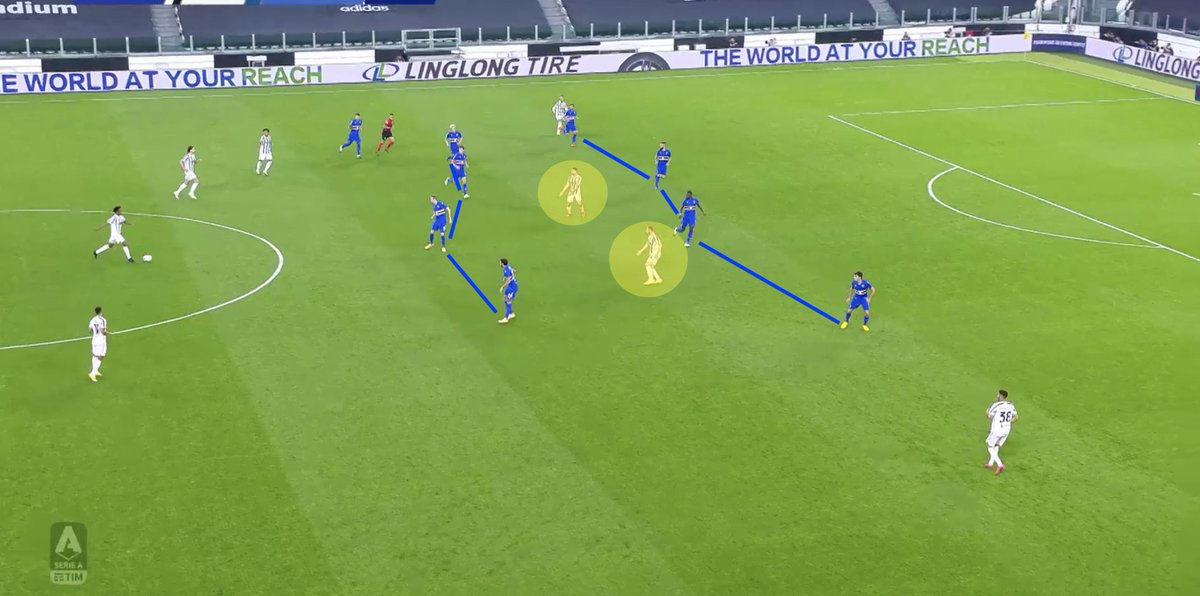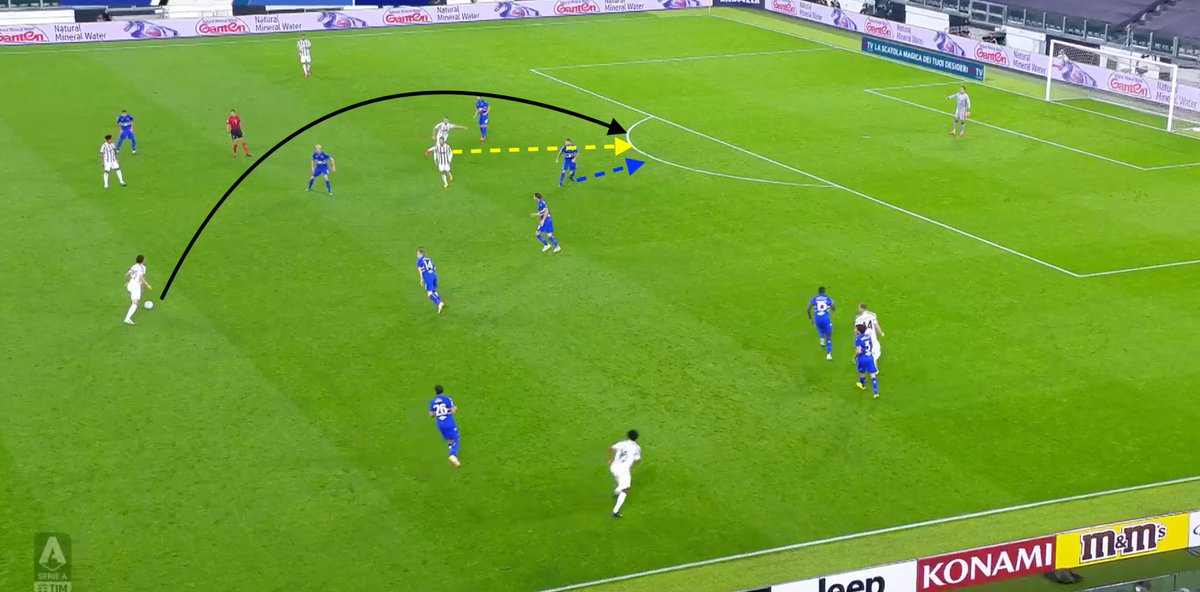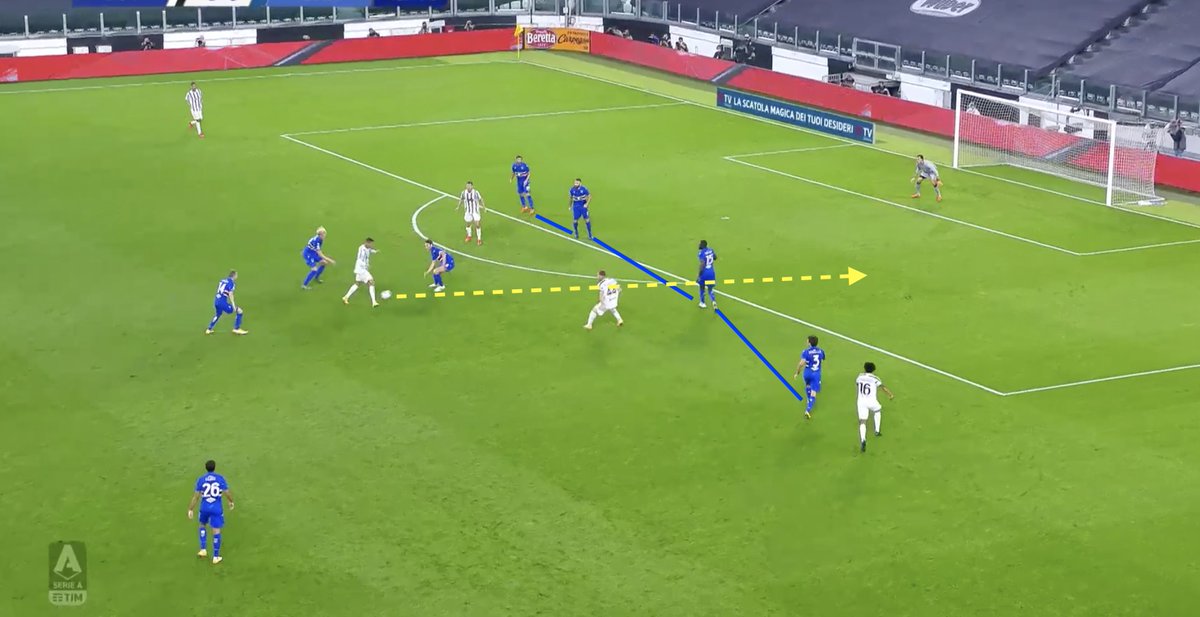<THREAD>
Rarely do we get such direct insight into a managers vision and ideas, as when Pirlo´s Pro-License paper became available. I have studied the implementation of his in possession principles over Juve´s first 2 games of the season + found examples each principle below:
Rarely do we get such direct insight into a managers vision and ideas, as when Pirlo´s Pro-License paper became available. I have studied the implementation of his in possession principles over Juve´s first 2 games of the season + found examples each principle below:
His entire game model is based on the idea of football with "Purposeful possession + attack. Total + collective football with 11 players active both in + out of possession. Manipulation of time + space will help to command the game in both phases."
In Possession:
His focus on technical players is not to be hidden. He wishes to build up possession from the back, whenever possible, with relation to the opposition press. In turn, he desires players who can achieve this through clean technical actions.
His focus on technical players is not to be hidden. He wishes to build up possession from the back, whenever possible, with relation to the opposition press. In turn, he desires players who can achieve this through clean technical actions.
Building Up
In the buildup phase he wishes to utilise the +1 rule in relation to numerical superiority, specifically mentioning the keeper as an option in the buildup. By doing this they will not waste vertical options below the initial press via redundancy.
In the buildup phase he wishes to utilise the +1 rule in relation to numerical superiority, specifically mentioning the keeper as an option in the buildup. By doing this they will not waste vertical options below the initial press via redundancy.
-The aim is to buildup centrally, to complicate the opposition pressing, as well as being more dangerous with the ball
-The goalkeeper should take up advanced positions to provoke pressure
-Rotations centrally to disorganise opposition pressure, pull them out of shape
-The goalkeeper should take up advanced positions to provoke pressure
-Rotations centrally to disorganise opposition pressure, pull them out of shape
The 4 key sub-principles of the building up phase include:
1. Creation of rhombus around ball carrier
2. Create + occupy free space
3. When ball carrier has space/time, teammates should move away from ball. When ball carrier is pressed, teammates should offer support
1. Creation of rhombus around ball carrier
2. Create + occupy free space
3. When ball carrier has space/time, teammates should move away from ball. When ball carrier is pressed, teammates should offer support
4. Positional attacking and discipline in each role of the structure
1. Creation of a rhombus around ball carrier during ball progression:
-Support behind + lateral support each side, combined with the vertex positioned behind the line of pressure allowing for maximum options for the ball carrier in close proximity
-Support behind + lateral support each side, combined with the vertex positioned behind the line of pressure allowing for maximum options for the ball carrier in close proximity
2a. Creating free space:
-Marked players move to create a new space
-Teammate moves to occupy newly created space and quickly receive a pass
-Marked players move to create a new space
-Teammate moves to occupy newly created space and quickly receive a pass
2b. Occupying free space:
-Behind the lines of pressure, continually readjusting position to maintain equal distances from opposition
-Mckennie readjusts position, scanning each shoulder, always staying central between the opposition defenders to maximise time and space
-Behind the lines of pressure, continually readjusting position to maintain equal distances from opposition
-Mckennie readjusts position, scanning each shoulder, always staying central between the opposition defenders to maximise time and space
3a. Recognising the signals: Movements away from the ball
-When the ball carrier is not under pressure, open teammates should move away
-Find new open spaces
-Attack the depth behind the opposition lines
-When the ball carrier is not under pressure, open teammates should move away
-Find new open spaces
-Attack the depth behind the opposition lines
3b. Recognising the signals: Movements towards pressured ball carrier
-If the ball carrier is under pressure, teammates should move towards the ball
-Create easy passing alternatives for the ball carrier in order to maintain possession within the team
-If the ball carrier is under pressure, teammates should move towards the ball
-Create easy passing alternatives for the ball carrier in order to maintain possession within the team
3b continued:
Another example of ball carrier under pressure with movement towards the ball and creating a simple passing option to relieve pressure
Another example of ball carrier under pressure with movement towards the ball and creating a simple passing option to relieve pressure
4. Position game: Positional attack + role discipline
-Importance of respecting positioning within the team structure
-Waiting in space for ball to arrive as opposed to destroying space + team structure
-Ramsey maintains position over 5 seconds, w/ small repositioning in space
-Importance of respecting positioning within the team structure
-Waiting in space for ball to arrive as opposed to destroying space + team structure
-Ramsey maintains position over 5 seconds, w/ small repositioning in space
Pirlo also touches on other sub-principles, including:
-Attacking free space
-Playing into space behind opposition if available
-Switching play
-Passing + moving
-Keeping the ball on the ground
-Looking for third man movements
-Attacking free space
-Playing into space behind opposition if available
-Switching play
-Passing + moving
-Keeping the ball on the ground
-Looking for third man movements
Positional Attacking
He stresses that there is no set patterns of play, but that the positioning of the players will rely on movements + space which are based on the sub-principles of each in possession phase.
He stresses that there is no set patterns of play, but that the positioning of the players will rely on movements + space which are based on the sub-principles of each in possession phase.
Pirlo sites 3 main fundamental principles for attacking the opposition lines:
1. Maximum width with 2 players
2. Continuous movements between the lines
3. Frequently making runs in behind
1. Maximum width with 2 players
2. Continuous movements between the lines
3. Frequently making runs in behind
Positional rotation within the team structure is extremely important to ensuring that empty spaces are created and occupied at all times. This means it does not matter who is filling the above criteria, as long as they are being achieved.
1. Width:
-Maximum 1 player filling the wing space
-1 player on each side of pitch to ensure maximum width
-Force opposition backs to decide: Stay compact + have minimal pressure on wing players, or mark wing players allowing for more space centrally
-Maximum 1 player filling the wing space
-1 player on each side of pitch to ensure maximum width
-Force opposition backs to decide: Stay compact + have minimal pressure on wing players, or mark wing players allowing for more space centrally
2. Between the lines:
-Main objective in positional attack is find players between backline + midfield
-Minimum 2 players occupying this space at all times
-Extra players can enter space
-When ball carrier is facing goal, runs made behind backline
-Avoid opposition cover shadow
-Main objective in positional attack is find players between backline + midfield
-Minimum 2 players occupying this space at all times
-Extra players can enter space
-When ball carrier is facing goal, runs made behind backline
-Avoid opposition cover shadow
3. In behind
-Constant runs in behind backline
-Stretching opposition to create more space between lines
-Keep opposition defenders engaged
-At least 5 players should occupy the 5 vertical corridors pictured above
-Constant runs in behind backline
-Stretching opposition to create more space between lines
-Keep opposition defenders engaged
-At least 5 players should occupy the 5 vertical corridors pictured above
In this example:
-Uncovered ball provokes run in behind
-Backline is stretched + space is opened between the lines for the 2nd ball
-Ball is then controlled between the lines
-Ball carrier attacks backline with speed
-Uncovered ball provokes run in behind
-Backline is stretched + space is opened between the lines for the 2nd ball
-Ball is then controlled between the lines
-Ball carrier attacks backline with speed
Attacking Third
In the attacking third, Pirlo expresses his desire to always attack the opposition with at least 5 players, 2 wide + 3 central. This line can include up to 7 players.
Minimum 1 central should:
-Make run in behind
-Find space between the lines
In the attacking third, Pirlo expresses his desire to always attack the opposition with at least 5 players, 2 wide + 3 central. This line can include up to 7 players.
Minimum 1 central should:
-Make run in behind
-Find space between the lines
A very interesting final point:
1 of the last things Pirlo describes in his in possession model, is that regardless of all of the time + space created before the attacking 3rd, it will often come down to individual talent + creativity in decisive situations + freedom to express.
1 of the last things Pirlo describes in his in possession model, is that regardless of all of the time + space created before the attacking 3rd, it will often come down to individual talent + creativity in decisive situations + freedom to express.
I will be looking to do a similar study on Pirlo´s Out of Possession principles in the future. Thanks in advance to any and all shares and feedback.
@CoachesShare @msceducation @FMAnalysis @P_AnalysisUK @JustFootball
@CoachesShare @msceducation @FMAnalysis @P_AnalysisUK @JustFootball

 Read on Twitter
Read on Twitter